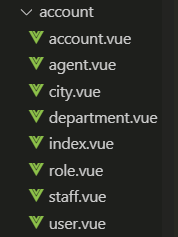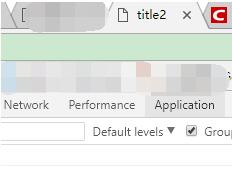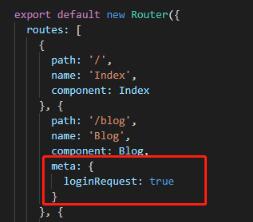项目下载地址 vue-cli多页面多路由项目示例 :vue+webpack+vue-router+vuex+mock+axios
Usage
This is a project template for vue-cli.
github上找到某大神的一个基于vue-cli模板的vueAdmin后台管理的模板,根据项目需求改成一个多页面多路由的vue项目。
PC端:后台管理页面,单独的页面入口,单独的路由。
移动端:业务展示页面,单独的页面入口,单独的路由。
踩了无数的坑,终于是初见效果了,随后继续优化更新
Install
# install dependencies npm install # serve with hot reload at localhost:8088 npm run dev # build for production with minification npm run build
使用Nginx服务器进行访问,地址如下:
PC端 http://localhost/modules/index.html
移动APP http://localhost/modules/index.html
多页面配置
vue2.0版本多页面入口,是由webpack配置来完成的,我的项目文件结构如下
webpack
|---build
|---config
|---dist
|---route 路由
|---src
|---api axios请求
|---assets 资源
|---common 公共js资源目录
|---components组件
|---modules各个模块
|---index index模块
|---views 组件
|---index.html
|---index.js
|---index.vue
|---phone phone模块
|---phone.html
|---phone.js
|---phone.vue
|---phone 组件
modules下为多个页面入口,文件名称保持一致,如:
modules |---index |---index.html |---index.js
.vue文件名称任意。
原则上这些文件名称都可以随意定,但由于下面entry入口函数的限定,换成其他名字可以会找不到。如果想要起其他文件名,请相应修改getMultiEntry()函数。
until.js
until.js中添加getMultiEntry(),依赖 glob插件,需要提前下载好,until.js开始引入
//获取多级的入口文件
exports.getMultiEntry = function (globPath) {
var entries = {},
basename, tmp, pathname;
glob.sync(globPath).forEach(function (entry) {
basename = path.basename(entry, path.extname(entry));
tmp = entry.split('/').splice(-4);
var pathsrc = tmp[0]+'/'+tmp[1];
if( tmp[0] == 'src' ){
pathsrc = tmp[1];
}
//console.log(pathsrc)
pathname = pathsrc + '/' + basename; // 正确输出js和html的路径
entries[pathname] = entry;
//console.log(pathname+'-----------'+entry);
});
return entries;
}
~\build\webpack.base.conf.js
找到entry,添加多入口
entry:entries,
运行、编译的时候每一个入口都会对应一个Chunk。 PS:终于明白这个chunk的含义了/(ㄒoㄒ)/~~
~\build\webpack.dev.conf.js
文末添加以下配置:
var pages = utils.getMultiEntry('./src/'+config.moduleName+'/**/*.html');
for (var pathname in pages) {
// 配置生成的html文件,定义路径等
var conf = {
filename: pathname + '.html',
template: pages[pathname], // 模板路径
chunks: [pathname, 'vendors', 'manifest'], // 每个html引用的js模块
inject: true // js插入位置
};
// 需要生成几个html文件,就配置几个HtmlWebpackPlugin对象
module.exports.plugins.push(new HtmlWebpackPlugin(conf));
}
其中config.moduleName = 'modules'
~\build\webpack.prod.conf.js
...
//构建生成多页面的HtmlWebpackPlugin配置,主要是循环生成
var pages = utils.getMultiEntry('./src/'+config.moduleName+'/**/*.html');
for (var pathname in pages) {
var conf = {
filename: pathname + '.html',
template: pages[pathname], // 模板路径
chunks: ['vendor',pathname], // 每个html引用的js模块
inject: true, // js插入位置
hash:true
};
webpackConfig.plugins.push(new HtmlWebpackPlugin(conf));
}
module.exports = webpackConfig
其中config.moduleName = 'modules'
至此,多页面的配置已经完成。访问地址为:
index : http://localhost:8088/modules/index.html
phone : http://localhost:8088/modules/phone.html
Browser Support
Modern browsers and Internet Explorer 10+.
snapshots
License
MIT
以上就是vue-cli如何实现多页面多路由的示例代码。每一个眼神,都透着默契;每一下心跳,都牵动彼此;每一段回忆,都藏着美好;每一段旅途,都载着情谊;每一句问候,都含着深情。朋友,惟愿你天天开心,幸福永远!更多关于vue-cli如何实现多页面多路由的示例代码请关注haodaima.com其它相关文章!





